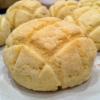March 23, 2013 - 12:04am

Hello from Vancouver WA
Hello Everyone,
I'm a scientist and photographer. Beginner baker. Started last month. First attempt was butter rolls, which turned out very dense and looking like potatoes.

Apparently it was a bad idea to nuke the yeast solution in the microwave. Learned a lot from this site. Happy to be here.
Tonight I tried to make cranberry ciabattini. They turned out a bit better.
Larry


Yeah, they do look like potatoes, but how do they taste?
On the other hand, I'm going to tell you something that I wish I'd been told long ago (>40yrs) when I first started baking as a hobby. It's this: there's so much to learn about baking well that the professionals go to school to learn it. If you try to get all that information into your head without expert advice along the way, while it's possible, it's gonna take quite a long time. At schools for bakers, they use text books. Remember organic chemistry? Chapters with questions and labs? Well, there are bread baking text books just like that and they are actually fun to work your way through. So my advice is this, learn from an expert by reading his text book and doing the questions and labs. Look at these two books: DiMuzio's Bread Baking and Hamelman's Bread. They're both good, but quite different. When I first started, I'd have like DiMuzio's better. You can probably find them in a local library system. They're both usually available used at Powell's or Alibris.
In addition, you can watch all the videos linked to from this website as soon as you can, then go back to the relevant ones when you need to. Watching them will give you an idea of the choreography of dough movement.
Finally, like getting to Carnegie Hall, you've got to practice, practice, and practice some more. Along the way, keep showing us your products. Feedback's often quite useful, though I have to leave you with this caveat: you won't really know whose feedback's likely to be useful until you've learned quite a lot yourself. Your chosen text (and by text do not mean a bread cook book) should be your initial guide.
They didn't taste too bad. Sweet, buttery and eggy. Just really dense. I got the recipe from here which has a lot of Asian breads I grew up with. That beginner failure had propelled me on a delicious journey, baking on average every other day for the past six weeks, as much as the family would allow me. I've pored over this site, the web and videos, but nothing quite like the magic of feeling the dough. My approach has been one of "edible experiments." I wanted to understand not only the how, but the why behind the steps and techniques. Why do you rise and let it rise again? What's with pre-shaping? Why does the dough pull back when I try to roll it out? It's been amazingly fascinating. And most definitely obsessive.
Now, I've not been a crusty bread person. However, I've been pleasantly surprised by the complex flavors from the simplest of ingredients. I see more of them in my future.
Ah, yes, I remember Organic Chemistry. Brings back (sometimes painful) memories. Oh the fumes... I can still smell the fumes.
I took a free class with Peter Reinhart this week on Craftsy on pizza. That was yummy.
Yesterday I watched the Art of Making Bread, and actually understood it. That made me smile.
Here's the ciabattini from last night. I was quite happy with the results. And hearing simple, "Mmm!" from the kids: priceless :)
Appreciate your advice! Off to Powells we go.
Larry,
Might I suggest that you try Buttermilk Cluster, the recipe is here on TheFreshLoaf. I think that they would produce what you are looking for.
Dwayne
Thank you, Dwayne, I'll give that a try.